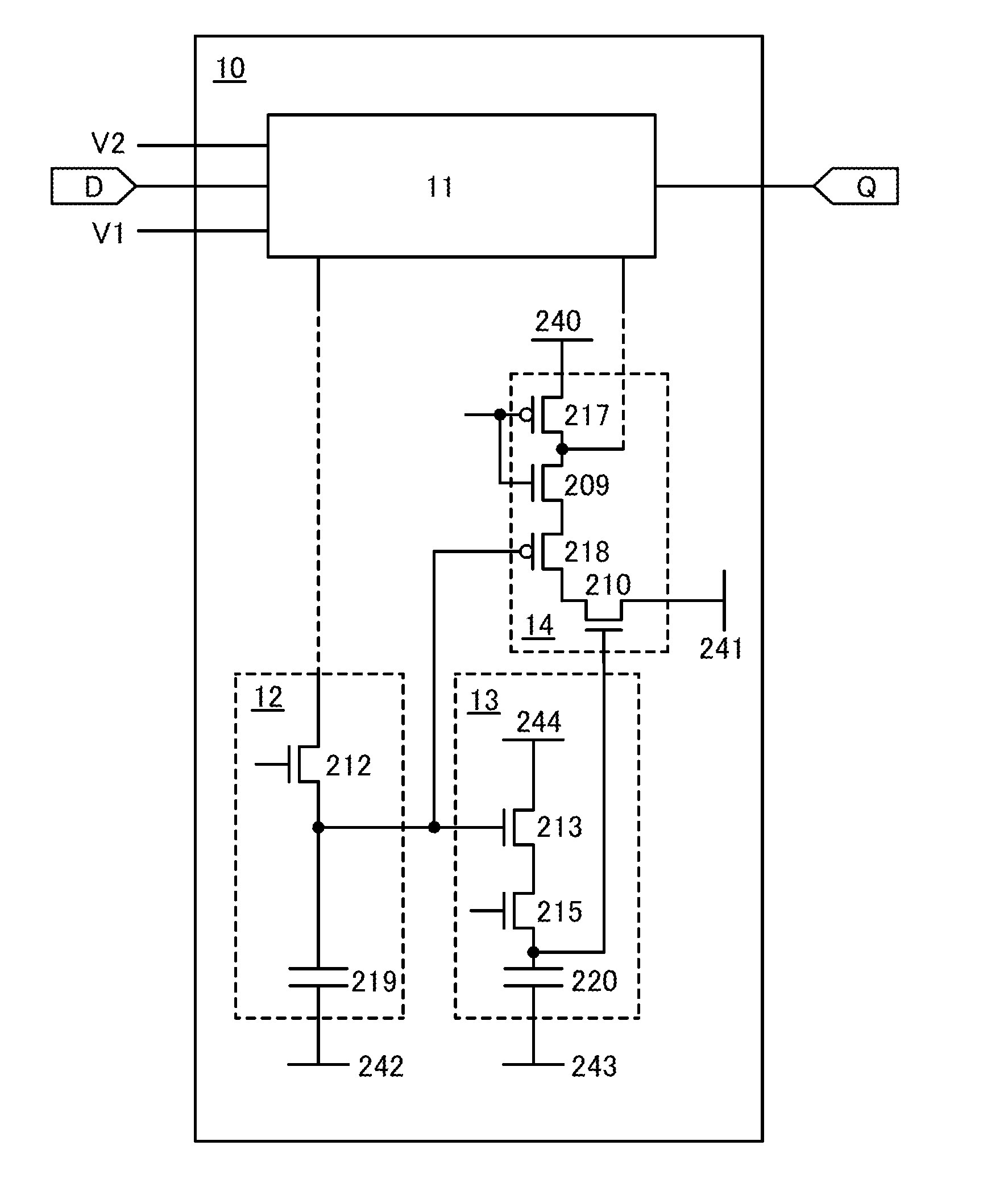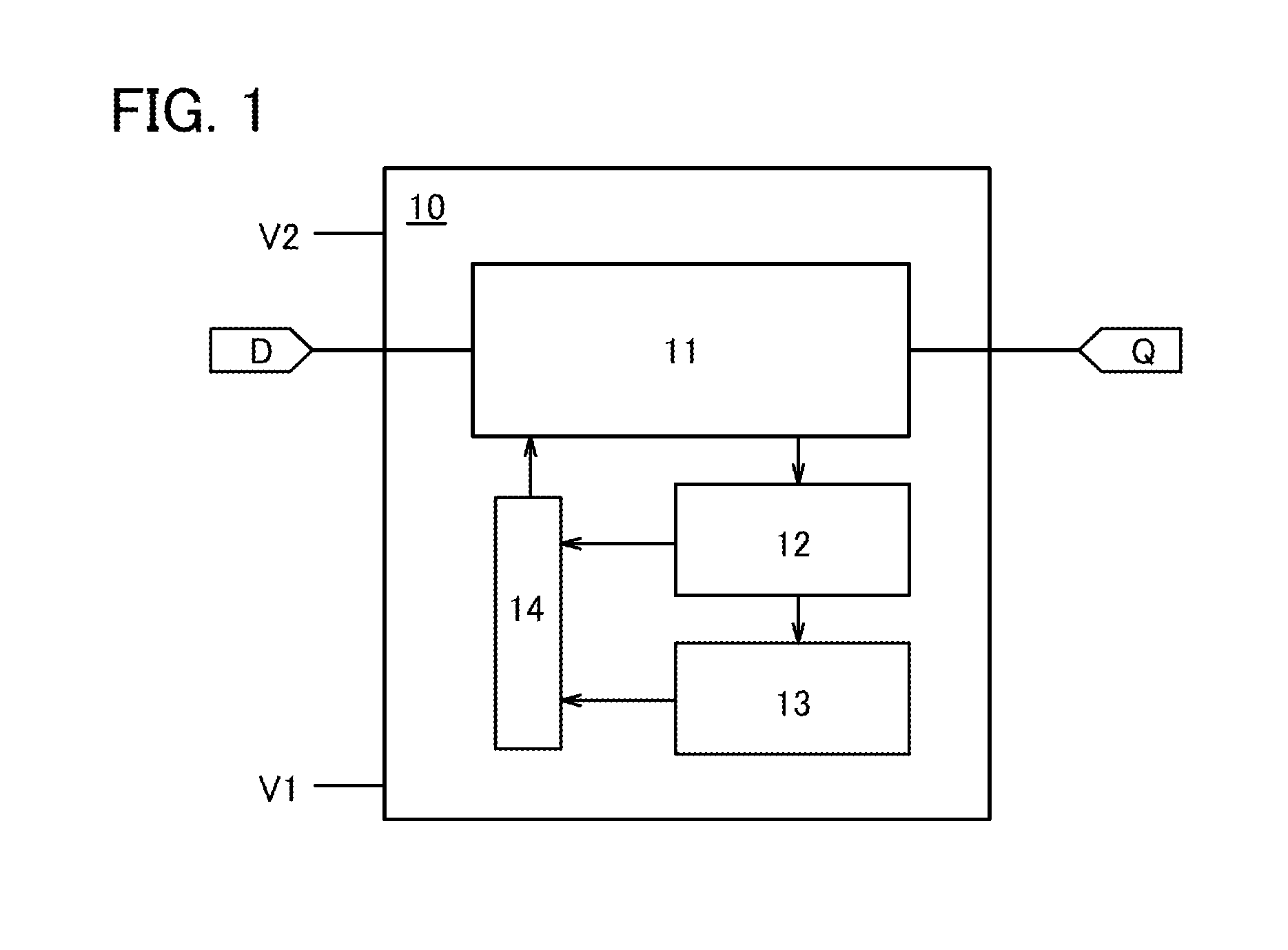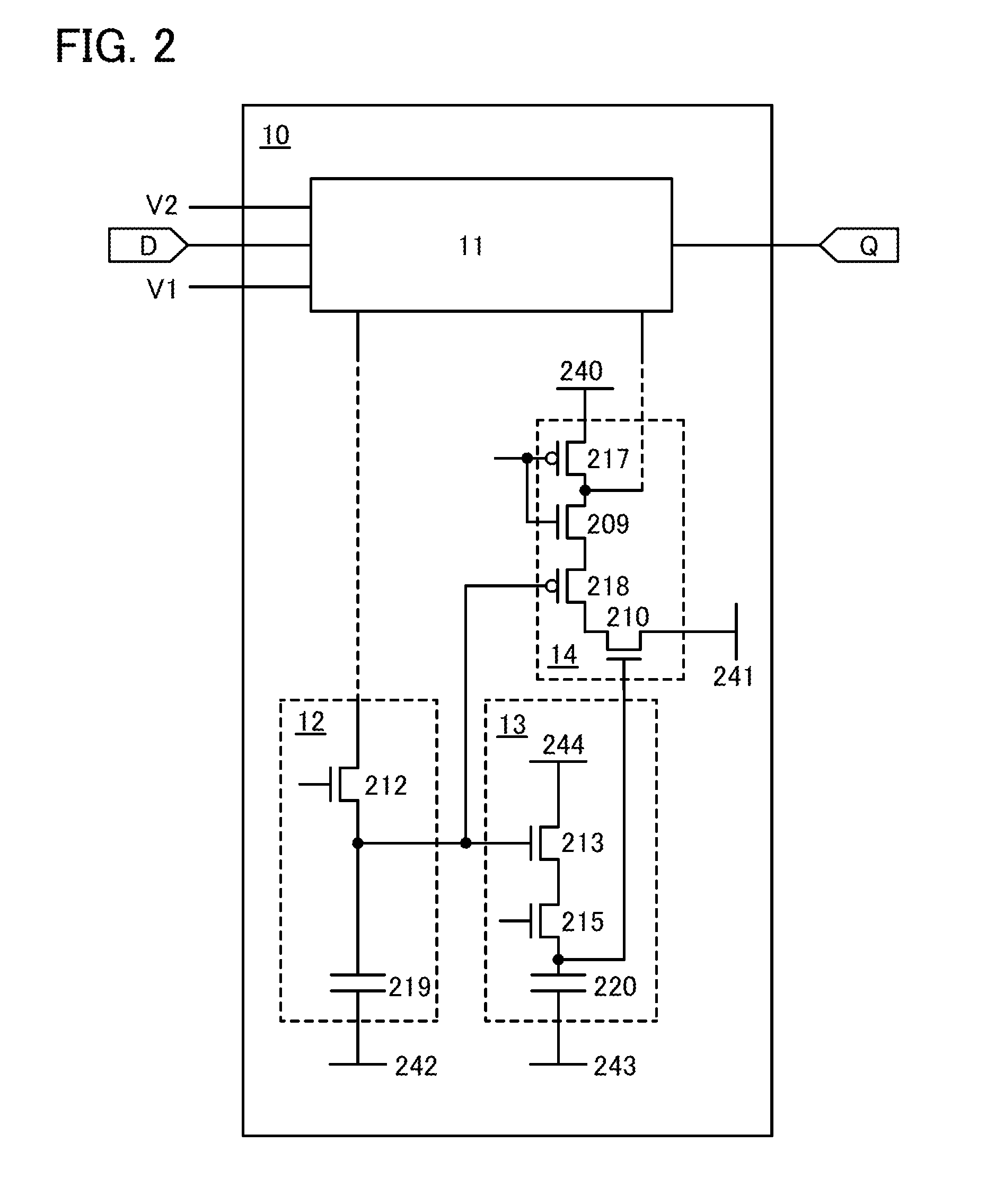Semiconductor device
a technology of semiconductors and devices, applied in the field of semiconductor devices, can solve the problems of increasing the power consumption of cpu, difficult to stop the supply of power in a period during which the cpu does not operate, etc., and achieve the effects of reducing overhead time, reducing overhead power, and reducing power consumption
- Summary
- Abstract
- Description
- Claims
- Application Information
AI Technical Summary
Benefits of technology
Problems solved by technology
Method used
Image
Examples
embodiment 1
[0035]FIG. 1 illustrates an example of the structure of a semiconductor device in one embodiment of the present invention. A semiconductor device 10 illustrated in FIG. 1 includes a first memory circuit 11 (first circuit), a second memory circuit 12 (second circuit), a third memory circuit 13 (third circuit), and a read circuit 14 (fourth circuit).
[0036]As a power supply voltage, a potential difference between a potential V1 and a potential V2 is supplied to the semiconductor device 10. One of the potential V1 and the potential V2 is high, and the other is low. The following shows an example of the structure of a semiconductor device in one embodiment of the present invention when the potential V1 is low and the potential V2 is high.
[0037]The first memory circuit 11 has a function of retaining data when a signal D including the data is input in a period during which the power supply voltage is supplied to the semiconductor device 10. The first memory circuit 11 outputs a signal Q in...
embodiment 2
[0052]In this embodiment, an example of a specific structure of the semiconductor device 10 of FIG. 1 in Embodiment 1 will be described with reference to FIG. 2. In the semiconductor device 10 illustrated in FIG. 2, the second memory circuit 12 includes a transistor 212 and a capacitor 219; the third memory circuit 13 includes a transistor 213, a transistor 215, and a capacitor 220; and the read circuit 14 includes a transistor 210, a transistor 218, a transistor 209, and a transistor 217. Note that FIG. 2 shows an example where the transistor 209, the transistor 210, the transistor 212, the transistor 213, and the transistor 215 are each an n-channel transistor and the transistor 217 and the transistor 218 are each a p-channel transistor.
[0053]The transistor 212 has a function of charging and discharging the capacitor 219 in accordance with data retained in the first memory circuit 11. The transistor 212 is preferably capable of charging and discharging the capacitor 219 at high sp...
embodiment 3
[0057]In this embodiment, an example of a more specific structure of the semiconductor device 10 described in Embodiment 1 or 2 will be described with reference to FIG. 3.
[0058]FIG. 3 illustrates an example of a circuit diagram of the semiconductor device 10.
[0059]The semiconductor device 10 includes the first memory circuit 11, the second memory circuit 12, the third memory circuit 13, and the read circuit 14. The first memory circuit 11 has a function of storing data in a period during which a potential difference between the low-level potential V1 and the high-level potential V2 is supplied as the power supply voltage.
[0060]The first memory circuit 11 includes a transmission gate 203, a transmission gate 204, an inverter 205, an inverter 206, an inverter 207, and a NAND gate 208. Note that the first memory circuit 11 may also include another circuit element such as a diode, a resistor, or an inductor as needed.
[0061]The operating frequency (corresponding to the inverse of data de...
PUM
 Login to View More
Login to View More Abstract
Description
Claims
Application Information
 Login to View More
Login to View More - R&D
- Intellectual Property
- Life Sciences
- Materials
- Tech Scout
- Unparalleled Data Quality
- Higher Quality Content
- 60% Fewer Hallucinations
Browse by: Latest US Patents, China's latest patents, Technical Efficacy Thesaurus, Application Domain, Technology Topic, Popular Technical Reports.
© 2025 PatSnap. All rights reserved.Legal|Privacy policy|Modern Slavery Act Transparency Statement|Sitemap|About US| Contact US: help@patsnap.com



